Imagine the year 2030. As you walk down the aisles of your grocery store, a noticeable transformation unfolds before your eyes. Once laden with products bearing long lists of artificial ingredients, the shelves now boast an array of organic options. This change is more than a trend; it’s a testament to a global shift in consumer preferences and attitudes towards what we eat. Organic food, which began as a niche movement, has now taken center stage in the narrative of future food consumption.
This evolution in our grocery stores is not a mere speculative scenario but a reflection of a significant shift occurring worldwide. From the bustling cities of New York and London to the growing economies of China and India, a common thread is emerging – an increasing demand for organic produce. This demand is not just a fad but a deep-rooted shift driven by a heightened awareness of health, environmental sustainability, and ethical consumption.
The Rise of Organic: Global Trends and Statistics
Once a nascent sector, the global organic food market has burgeoned into a powerhouse, charting a trajectory of robust growth and widespread adoption.
Organic agriculture is practiced in 191 countries, and more than 76 million hectares of agricultural land are managed organically by at least 3.7 million farmers. In 2021, the global market for organic foods was valued at an impressive $137 billion, up from $96 billion the previous year, according to the Research Institute of Organic Agriculture (FiBL), and it has continued to expand at an accelerated pace since.
The United States, a frontrunner in this organic revolution, has seen its organic food sales soar. The Organic Trade Association reported a record-breaking $67.6 billion in organic sales in 2022, marking a significant increase from previous years. This surge reflects a growing demand for healthier and more sustainable food choices.
With its vast population and rapidly growing middle class, China is not far behind. The Chinese organic food market experienced remarkable growth, with a reported market value of $14.52 billion in 2022. As the fourth largest organic market in the world and the first in Asia, China is an increasingly important buyer of organic products. Looking at the evolution of the market, organic food in China has enormous potential in international and domestic markets. China’s organic food industry is expected to grow at a CAGR of 13.34% from 2022 to 2028. This trend clearly indicates the shifting consumer preferences in one of the world’s largest markets.
In India, a country traditionally rooted in organic farming practices, the organic food market is witnessing a renaissance. The Indian Organic Food Market is projected to grow at a CAGR of 20.5% during 2021-2026. An increasing awareness of health benefits and environmental concerns fuels this growth.
Southeast Asia, including Indonesia, the Philippines, Thailand, and Vietnam, is also catching up. These regions have seen a surge in organic agriculture, driven by local consumption and export opportunities. For instance, Thailand’s National Bureau of Agricultural Commodity and Food Standards reported a significant increase in organic farming areas, signifying a growing market both domestically and internationally.
Japan and Singapore, known for their stringent food quality standards, have also embraced organic food. Japan’s organic market has been growing steadily, with the Organic Consumer Association citing a market size of approximately $1.6 billion. Although smaller in scale, Singapore is witnessing a similar upward trend, with a growing number of organic retailers and farms.
The United Kingdom, representing Europe’s second-largest market for organic products, has seen a consistent increase in organic sales. The Soil Association’s latest Organic Market Report revealed that the U.K.’s organic market surpassed £3.1 billion, continuing its eleven-year growth trend.
These statistics underscore the burgeoning global demand for organic products and highlight a significant shift in consumer consciousness.
People across the globe are increasingly prioritizing health, environmental sustainability, and ethical considerations in their food choices.
Consumer Attitudes and Behaviors
The shift towards organic food is not merely a transactional change but a profound alteration in lifestyle and values. This shift varies significantly across different regions, painting a mosaic of consumer mindsets and practices.
Western Markets: Health and Environment at the Forefront
In the West, particularly in the United States and the United Kingdom, consumer attitudes towards organic food are deeply rooted in health and environmental consciousness. The Hartman Group’s Organic and Beyond report reveals that American consumers associate organic products with healthiness, environmental stewardship, and ethical production practices. In the U.K., the Soil Association’s report echoes similar sentiments, showing that concerns about health, animal welfare, and the environment are key drivers for organic purchases.
These attitudes translate into behaviors that prioritize organic options despite often higher prices. Supermarkets and online retailers in these regions have expanded their organic ranges significantly to meet this demand, illustrating a consumer base willing to invest in their health and ethical values.
Eastern Markets: Rising Awareness and Cultural Resurgence
In contrast, Eastern markets exhibit a blend of emerging awareness and a return to traditional agricultural roots. In China, the escalating concern over food safety scandals has propelled the organic market. Chinese consumers increasingly associate organic with safety and quality, altering their purchasing behaviors accordingly.
India presents a unique case where the organic movement intertwines with a cultural resurgence of traditional farming practices. A survey by Ernst & Young indicated that Indian consumers are increasingly opting for organic food to avoid chemicals and preservatives, highlighting a health-centric behavioral shift.
Southeast Asian markets like Indonesia, Thailand, and Vietnam showcase a dual trend: a growing middle class seeking healthier lifestyles and an export-driven organic agriculture sector. In these regions, adopting organic food is not just a consumer choice but also an economic strategy, as noted in a report by the International Trade Centre.
Young and Old
A fascinating case study from Japan, documented by the Organic Consumer Association, showcases an aging population increasingly turning towards organic food, viewing it as a means to ensure long-term health and well-being.
In Singapore, a study by the National University of Singapore observed a rising trend in organic consumption among the younger, more environmentally conscious demographic, who are willing to pay a premium for organic products.
Synthesizing East and West
In Western markets, the driving force is a blend of health consciousness and environmental responsibility, while in Eastern markets, it’s a combination of health concerns, cultural revival, and economic considerations.
The global organic wave is thus not a uniform phenomenon but a spectrum of attitudes and behaviors, each colored by regional nuances yet unified by a common inclination towards healthier, more sustainable food choices. The organic movement is reshaping the food we consume and our values and priorities as global citizens.
Transforming Agriculture: Embracing Organic Practices
The rise in organic food consumption is transforming agricultural practices worldwide. According to the Food and Agriculture Organization (FAO), organic farming, once a peripheral method, is now at the forefront of sustainable agriculture conversations. Organic farming eschews synthetic pesticides and fertilizers, focusing instead on biodiversity, ecological balance, and resource cycling.
This shift is evident in the increasing acreage dedicated to organic farming. The FiBL’s report showed that global organic agricultural land increased by 4.1% in 2019, with countries like Australia, Argentina, and China leading in total area. In the United States, the USDA reported that organic farmland had expanded to 5.5 million acres by 2019, reflecting a growing commitment to sustainable agriculture.
Grocery Brands: Adapting to a Green Revolution
Grocery brands, both big and small, are adapting to this green revolution. They are expanding their organic product ranges and integrating sustainability into their business models. For example, major retailers like Walmart and Tesco have significantly increased their organic offerings, responding to consumer demand for more organic choices.
In addition to expanding organic product lines, some brands are taking it further by committing to sustainable practices across their supply chains. Companies are investing in sustainable sourcing, reducing carbon footprints, and improving transparency to meet consumer expectations for ethical and environmentally friendly products.
Pioneers in Organic Transition
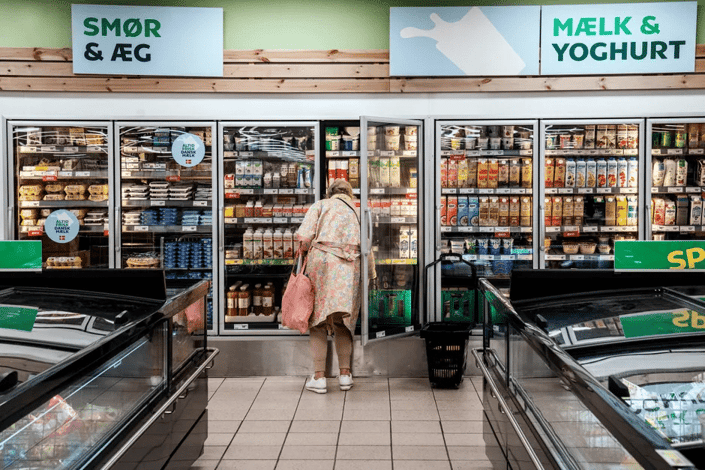
A notable example is the Danish supermarket chain Coop Danmark, which has ambitious goals for increasing organic sales. According to their reports, they aim to make 40% of their produce organic by 2025, a move reflecting their commitment to sustainable food retailing.
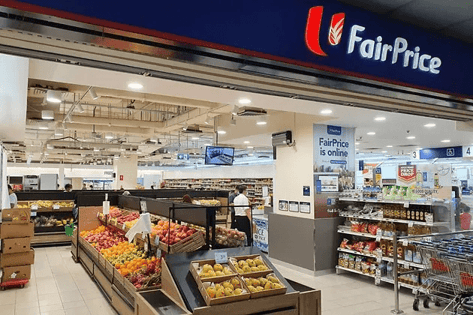
In Asia, supermarkets like AEON in Japan and NTUC FairPrice in Singapore have been progressively expanding their organic ranges. AEON, in particular, has committed to environmentally friendly practices, including sourcing more products from sustainable agriculture.
Synthesis: A Unified Shift Towards Sustainable Food Systems
This unified shift towards organic agriculture and sustainable grocery practices indicates a broader movement towards sustainable food systems. It’s not merely a change in what we grow or sell but a holistic transformation in how we think about food production and consumption.
As these trends continue to evolve, they are setting new standards for agriculture and grocery retail, standards that prioritize not just profit but people and the planet. The future of food is being redefined by these movements, with organic and sustainable practices at its core. The organic wave is, thus, not just shaping our present; it’s carving out a more sustainable and health-conscious future.
United States: The Rise of ‘Organic Valley’
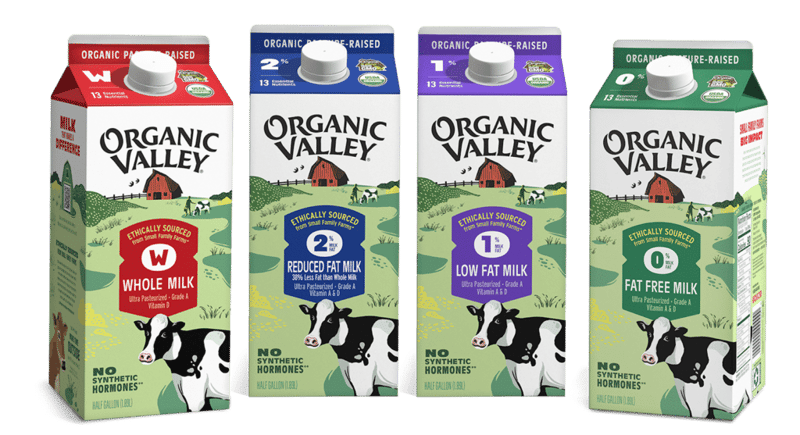
In the United States, the cooperative Organic Valley has emerged as a remarkable success story. Founded in 1988 by a group of Wisconsin farmers determined to keep their farming practices chemical-free, Organic Valley has grown into one of the largest organic consumer brands in the U.S. The cooperative’s model, which prioritizes fair prices for farmers and sustainable practices, has contributed to the growth of organic farming in the U.S. and inspired similar models worldwide.
China: Tony’s Farm
Tony’s Farm, located in Shanghai, is an example of successful organic farming in China. Tony’s Farm produces over 60 types of organic vegetables and fruits and has become the largest organic farm in Shanghai. Their success story is not just about scale; it’s about influencing consumer behavior in a market where organic was once a foreign concept. Their commitment to organic practices has set a precedent in a market that is increasingly health-conscious and environmentally aware.
India: 24 Mantra
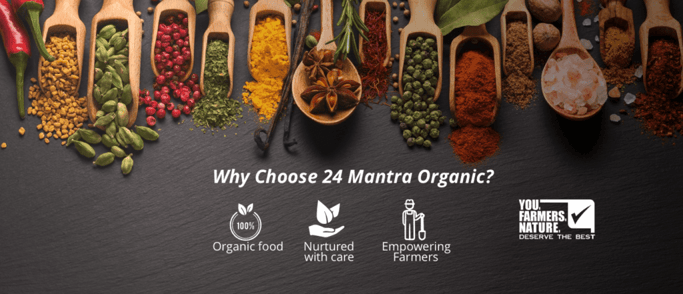
In India, 24 Mantra is a success story in the organic sector. Started with a vision to provide organic food products to Indian consumers and promote sustainable farming, 24 Mantra has grown exponentially and now reaches global markets. Their success lies in connecting small-scale farmers with the burgeoning market for organic products, thus promoting both healthy eating and sustainable agriculture.
Philippines: Ritual
Ritual, a small store in Manila, illustrates the growing organic movement in the Philippines. It specializes in locally sourced organic products, ranging from food to household items. Ritual has become a hub for consumers seeking sustainable, ethical, and locally produced goods, reflecting a growing consciousness among Filipino consumers about the origin and quality of their purchases.
Indonesia: East Bali Cashews

East Bali Cashews is an inspiring case from Indonesia. This company integrates organic farming with social enterprise, providing employment and education opportunities in the rural Balinese community. They produce organic cashews, emphasizing environmental sustainability and community development, showcasing how organic business models can have a broader socio-economic impact.
Thailand: Sookjai Foundation
The Sookjai Foundation in Thailand is a notable example of promoting organic agriculture among local farmers. This foundation supports farmers transitioning to organic methods, addressing both environmental concerns and health issues linked to chemical pesticides and fertilizers. Their work highlights the challenges of changing traditional farming practices and the importance of community-level initiatives in promoting organic agriculture.
United Kingdom: Abel & Cole
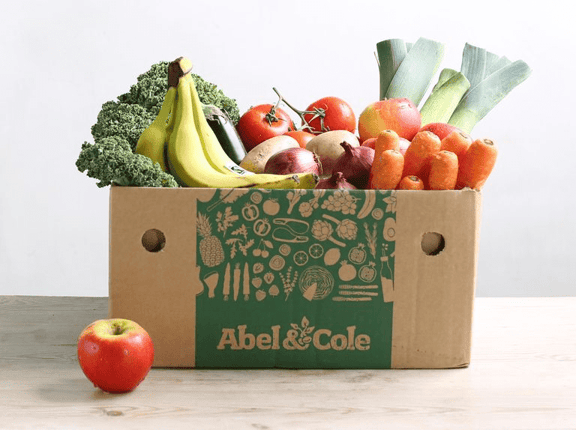
In the UK, Abel & Cole stands as a testament to the success of organic delivery services. Starting as a doorstep delivery service for organic vegetables, Abel & Cole has become a significant player in the U.K.’s organic market. Their commitment to sustainability, evident in their sourcing and packaging, resonates with a growing segment of environmentally conscious consumers.
Vietnam: Vinamit
In Vietnam, Vinamit is a noteworthy brand in the organic sector. Known for its organic dried fruits and snacks, Vinamit has overcome challenges related to processing and preserving organic produce. Their success in local and international markets underscores the potential for organic products in Vietnam’s food industry.
Japan: Oisix ra daichi Inc.
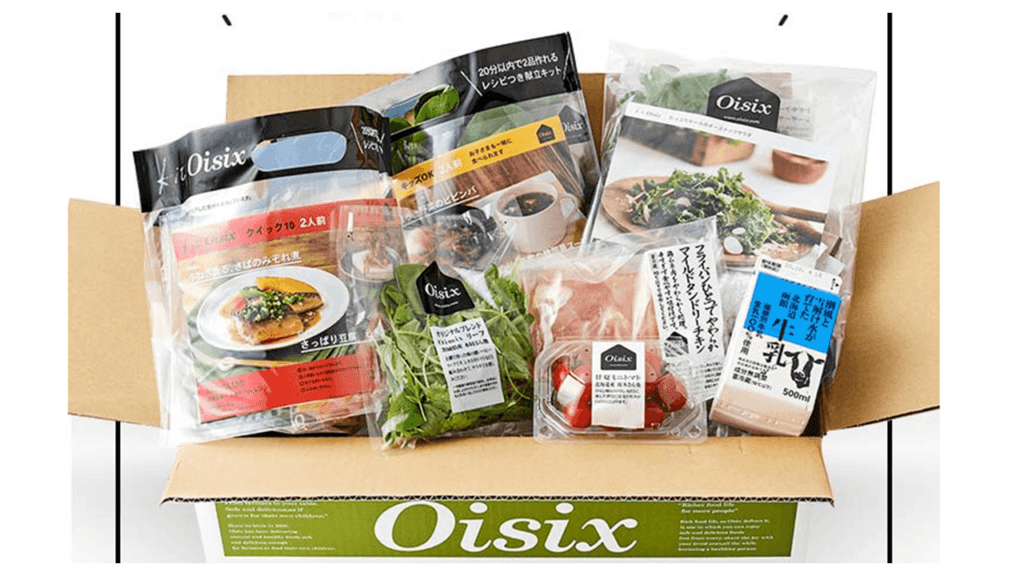
Japan’s Oisix ra daichi Inc. is revolutionizing how organic produce is delivered to consumers. As an online organic grocery delivery service, Oisix connects consumers directly with farmers, ensuring fresh, high-quality organic produce. Their success indicates a digital age organic market, aligning consumer convenience with sustainable practices.
Singapore: Quan Fa Organic Farm
Quan Fa Organic Farm in Singapore exemplifies the challenges and successes in urban organic farming. Despite limited agricultural land, Quan Fa has succeeded in cultivating a wide range of organic produce, adhering strictly to natural farming methods. Their journey reflects the potential for organic agriculture even in highly urbanized settings.
Future Outlook
The future of the organic food market beams with possibilities and challenges. The trajectory we have witnessed thus far paints an optimistic picture. Yet, it requires continuous adaptation and understanding, especially in the context of global trends and consumer behaviors.
Predictions for the Global Organic Food Market
The organic food market is projected to maintain its upward trajectory, driven by increasing health awareness, environmental concerns, and a burgeoning middle class in emerging markets. According to a report by Grand View Research, the global organic food and beverage market size is expected to reach USD 320.5 billion by 2025, growing at a compound annual growth rate (CAGR) of 16.4% from 2019 to 2025.
This growth is not just confined to Western markets but is increasingly evident in Asia-Pacific and other emerging economies, where urbanization and income growth are creating new opportunities for organic products. The expanding market scope implies that organic food is transitioning from a lifestyle choice of the few to a mainstream preference.
Shaping the Future of Food and Agriculture
The current trends in organic food consumption are reshaping consumer choices and influencing agricultural practices globally. There is a growing movement towards sustainable agriculture, driven by the need to meet the organic market’s demands while addressing environmental concerns like soil health, biodiversity, and climate change.
This shift suggests a future where sustainable and organic farming practices could become the norm rather than the exception. Integrating technological advancements in organic farming could further enhance productivity and sustainability, making organic food more accessible and affordable.
Understanding and Adapting to Global Trends: The Role of Market Research
In this evolving landscape, market research becomes crucial for brands and businesses in the organic sector. Understanding consumer buying behaviors and patterns is key to staying ahead in the competitive market.
Brands must delve into what motivates consumer choices – is it health, environmental concern, quality, or a combination of these factors?
Market research can provide invaluable insights into these consumer dynamics, allowing brands to tailor their products and marketing strategies effectively. It’s not just about capturing the market share; it’s about resonating with consumer values and lifestyles.
Preparing for the Future
Brands looking to thrive in the future organic market need to be proactive. They should invest in understanding their consumers deeply, not only in terms of current preferences but also in anticipating future trends. This involves engaging in continuous market research, connecting with consumers, and adapting to changing market dynamics.
Brands should also consider their role in promoting sustainable practices in agriculture and the broader context of their supply chains. This commitment to sustainability can become a key differentiator and driving force for brand loyalty among increasingly environmentally conscious consumers.
The organic wave is more than just a trend; it’s a paradigm shift in our relationship with food. As we look towards the future, embracing and understanding these global trends in organic food becomes paramount. Adapting to this shift is beneficial and essential for brands, farmers, and consumers alike. The future of food and agriculture is being rewritten, and it promises a landscape where health, sustainability, and quality are at the heart of our food choices.




